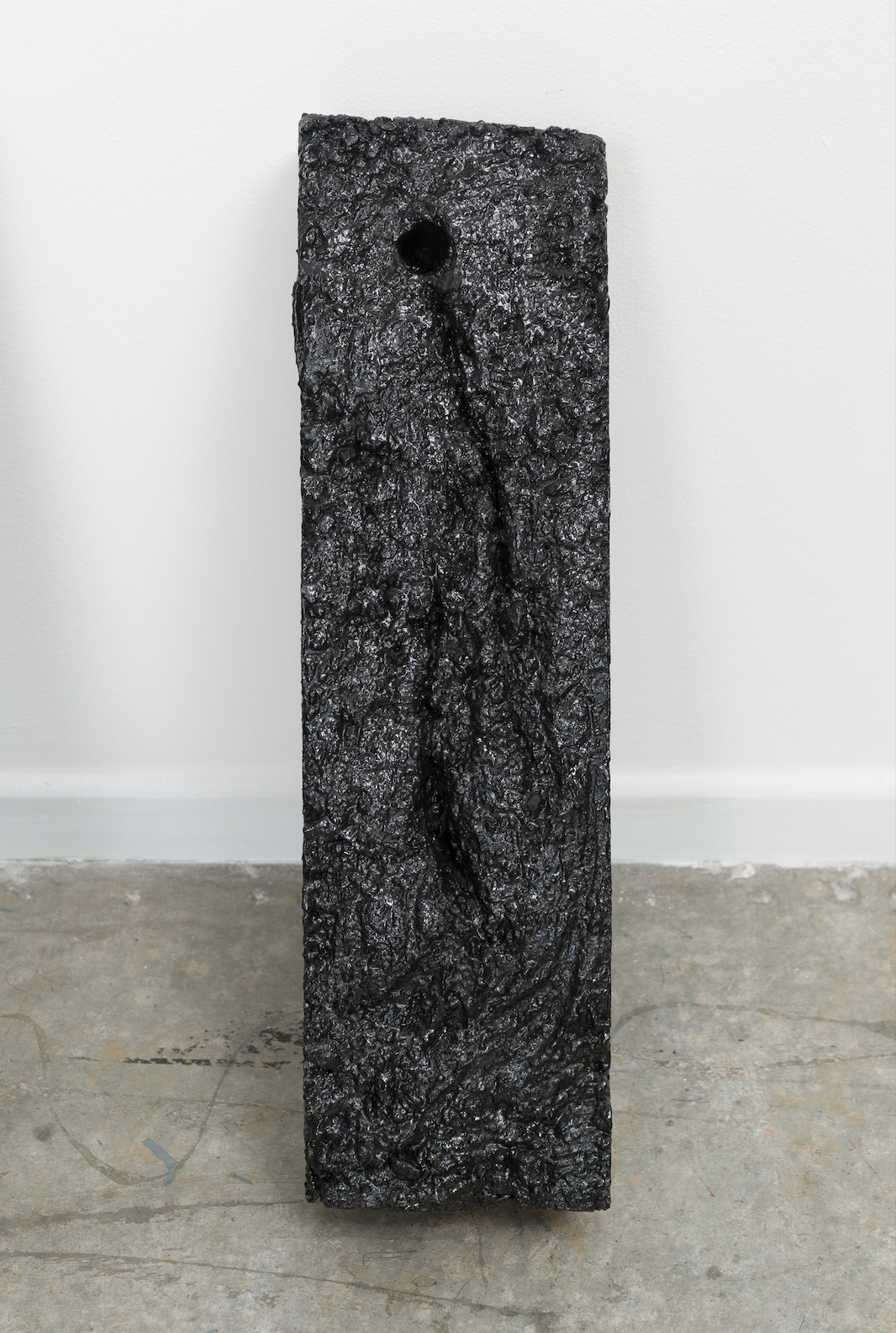![]()
après-coup: 6 of 1,400, 2023 (detail)
6 x 4 x 21 in.
cement, waste ash, sea water, limestone, iron oxide
![]()
tabernacle, Exhibition View
Also Pictured: Los Angeles Poverty Department
![]()
tabernacle, Exhibition View
Also Pictured: Los Angeles Poverty Department and Andre Keichian
![]()
Installation at Fellows of Contemporary Art
![]()
tabernacle, Exhibition View
Also Pictured: Los Angeles Poverty Department, Miller Robinson, and Andre Keichian
![]()
après-coup: 6 of 1,400, 2023 (detail)
6 x 4 x 21 in.
cement, waste ash, sea water, limestone, iron oxide
For tabernacle, Group Exhibition Curated by Matthew Lax
Installation at Fellows of Contemporary Art, Los Angeles
Documentation by Ian Byers-Gamber
après-coup: 6 of 1,400 is the first in an ongoing series made for tabernacle, a group exhibition at Fellows of Contemporary Art curated by Matthew Lax. Garden’s ballasts are composed of concrete,calcium-oxide from limestone carapaces of marine life, incinerated refuse from an undisclosed waste-to-energy facility (which functions as a binding agent), and coated/mixed with iron-oxide. Prior to coating, they are bathed in sea water, a method pulled from the processes of antiquity primarily used in the production of Roman concrete, which continuously strengthens the mineral bonds over long periods of time. The iron-oxide coating materially entreats its historical referent: the iron ballasts discovered in 2015 off the coast of South Africa which belonged to the slave ship known as the São José Paquete D’Africa. Documents from the ship recorded the presence of 1,400 ballasts; only 12 have been recovered and are in transnational circulation between institutions. These ballasts functioned to offset the weight of enslaved ‘cargo’ and maintain the ship’s buoyant stability for the duration of its passage.
Garden’s ballasts were cast in a mold designed to produce concrete beams used strictly for flexural testing, which tests the tensile strength of a concrete composite before proper constructional use. In other words, the beams produced with this mold are cast to be pushed to their tensile limit and discarded thereafter. They are valuable/indispensable to the extent that they must be ceded so as to yield measurements toward optimal stability.
The title’s term ‘après-coup,’ borrowed from the work of Jean Laplanche, translates roughly as “deferred action” and/or “after-effect”. This is theorized and applied with regards to unconscious material/memory which does not present itself as repressed to the subject until a later point of actuation, whereupon the recognition of this repression (different from an acceptance of it) is only possible through negation or distortion.
